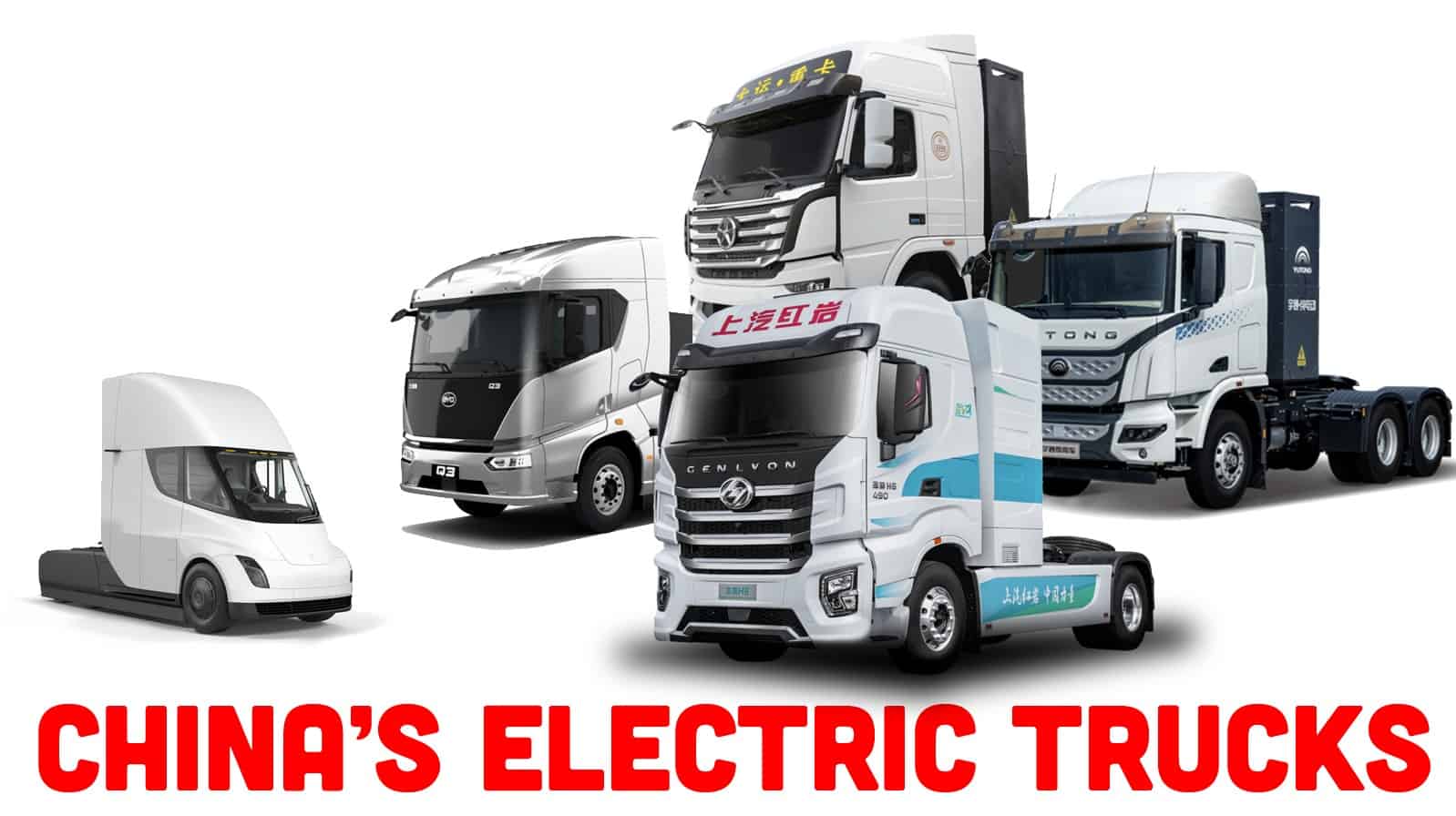Special report on heavy truck export: Overseas is expected to recreate a domestic market
May 9, 2024 Tina
Total volume review: Exports have been an important increase in heavy truck sales since 2021
The export of heavy trucks will explode in 2021: According to the China Automobile Manufacturers Association, in 2021/2022/2023, my country’s heavy truck exports will be 11.4/17.4/276,000 units respectively; the cumulative increase in heavy truck exports from 2020 to 2023 is 215,000 units, with a CAGR of 65.4 from 2020 to 2023. %.
Exports are an important increment in this round of heavy truck upward cycle. In 2023, my country’s heavy truck export/wholesale-export sales will be 276,000/635,000 units, respectively, +58.6%/+27.6% year-on-year, respectively. Exports drive overall sales growth. Looking at the incremental growth, my country’s heavy truck wholesale sales will increase by 239,000 units in 2023, of which domestic sales will increase by 137,000 units and exports will increase by 102,000 units.

Product Category: Export products are mainly tractors and trucks
Export products are mainly tractors and trucks. We divide heavy truck customs export models into tractors/trucks/engineering vehicles/special vehicles/other trucks/heavy truck chassis. Among the export products in 2023, there were 144,000 tractors/112,000 trucks respectively, accounting for the total export volume respectively. 48.5%/37.8% of the total; engineering vehicles/other trucks/special vehicles/heavy truck chassis were 2.6/1.2/0.98/19,000 units respectively, accounting for 8.8%/4.0%/0.3%/0.6% of the total export volume respectively.
Looking at the trend, export sales of tractors have grown the fastest in the past three years. The year-on-year growth rates of export sales of tractors/trucks/engineering vehicles+heavy truck chassis in 2023 were 110.3%/62.1%/68.2% respectively; the export sales CAGR in 20-23 were 77.6%/54.1%/49.4% respectively.
Regional flow: CIS/Africa/Southeast Asia are the main export markets
From a regional perspective, the CIS/Africa/Southeast Asia are the main export markets. In 2023, my country’s heavy truck export volume reached 297,000 units. The top three markets were the CIS/Africa/Asia, with sales of 136,000/64,000/43,000 units respectively, accounting for 45.7%/21.6%/14.4% of the total. Reaching 81.7%. Looking at the breakdown, the CIS is dominated by Russia, with exports of 113,000 vehicles in 2023, accounting for 83% of sales exported to the CIS.
Judging from the trend, the CIS/Middle East is the market with the fastest growth rate of exports. In 2023, the CIS/Middle East export sales volume was +245%/+159% year-on-year respectively, and the CAGR of the CIS/Middle East export sales volume in 20-23 years was +149%/+120% respectively. In addition, export sales to Oceania/Latin America/Africa/Europe in 2023 were +53%/+34%/+29%/+28% year-on-year respectively.
Country flow: Russia is the main export destination country
Looking at different countries, the total proportion of my country’s heavy truck export sales to CR10 countries will remain above 60% from 21 to 23. In 21/22/23, the sales volume of domestic heavy truck exports in the top 10 countries were 8.1/10.2/199,000 units respectively, accounting for 61.7%/61.9%/67.1% respectively.
Russia is the main export destination country. Starting from 2022, Russia will become the number one destination for my country’s heavy truck exports. In 2022 and 2023, the sales volume to Russia was 30,000/113,000 units respectively, accounting for 18.4%/37.9% of the total export volume, significantly ahead of the share of the second destination country.
Source of increase: Growth in 2023 was mainly driven by the CIS
Looking at the increments, export growth in 2023 was mainly driven by the CIS. In 2023, my country’s heavy truck export volume increased by 132,000 units. The top three incremental markets, the CIS/Africa/Middle East, increased by 96,000/14,000/14,000 units respectively, contributing a total of 94% of the increase, of which the CIS contributed 72%. % increase, while the Asian market with larger export scale remained stable.
The top three incremental markets for exports in the past three years are the CIS/Africa/Asia. From 20 to 2023, my country’s heavy truck exports increased by 225,000 units. The top three incremental markets, CIS/Africa/Asia, increased by 127,000/38,000/26,000 units respectively, contributing a total of 84.5% of the increase. Among them, the CIS contributed an increase of 56%.
2. Outlook: Overseas is expected to recreate a domestic heavy truck market
The total overseas market size is approximately 1.54 million vehicles, and the reachable market is approximately 560,000 vehicles.
Overall situation: The total size of the overseas heavy truck market is about 1.54 million units, of which Chinese brands have a reach of about 560,000 units. Comprehensive consideration of the local competition pattern, assuming that the market size remains unchanged, and given the market share in 3 to 5 years, it is estimated that the export volume will reach 400,000 units in 3 to 5 years. According to the caliber of the China Automobile Association, my country’s heavy truck export volume in 2023 will be 27.6 million vehicles, with a cumulative growth space of 45.7% in 3 to 5 years.
The total overseas output value is 1.26 trillion yuan, and the accessible market is about 0.41 trillion yuan.
From the perspective of output value, the global heavy truck market size is 1.58 trillion yuan, of which the Chinese market size is 0.32 trillion yuan and the overseas market size is 1.26 trillion yuan; excluding Europe, the United States, Japan and South Korea/South Asia, the overseas accessible market output value is approximately 0.41 trillion yuan. .
Europe – Total volume: market size is 300,000-350,000 vehicles, mainly due to update demand
Market size: According to ACEA data and our calculations, the market size in Europe (EU+EFTA countries) is about 300,000-350,000 vehicles. Demand characteristics: 1) A single vehicle corresponds to a higher GDP; 2) Heavy-duty trucks have a long life cycle and a low scrap rate; 3) Heavy-duty truck sales are mainly scrapped and updated. Among the 342,000 units sold in 2023, the estimated new capacity/ scrapped update demand is 2.6 respectively. /316,000 vehicles.
Europe – Pattern: European brands account for 95% of the market share, and the pattern is stable
Market structure: European brands occupy a monopoly position. In 2023, the seven major European brands had a combined market share of approximately 95%. Among them, the market shares of Daimler and Volvo are in the 15%-20% range, the market shares of DAF, Scania, and MAN are stable at around 15%, and the market shares of Renault and Iveco are in the 5%-10% range. Since 2009, the European market structure has been stable. The seven major European brands have always occupied more than 90% of the market share. It is difficult for overseas brands to break through. Chinese brands: Sales exported to Europe in 2023 were less than 1,000 units. There is no obvious growth trend in the long term. It is difficult for Chinese brands to break into the European market.
North America – Total volume: Steady-state scale of 300,000 vehicles, mainly due to update demand
Market size: Steady-state sales volume is about 300,000 vehicles. From 2017 to 2023, North America’s total GDP CAGR was 2.1%, and heavy truck sales CAGR was 5.2%. Demand characteristics: 1) The GDP value of heavy-duty trucks in North America is relatively high; 2) There is not much demand for new transportation capacity under slow economic growth, and the sales of heavy trucks are mainly based on the demand for scrapping and replacement. It is estimated that the total sales volume in 2023 will be 297,000 units, and the new transportation capacity will be / The demand for scrapping and renewal is 76,000/220,000 vehicles respectively; 3) The five-year average scrapping rate is 7.2%, which is slightly lower than the average scrapping rate in my country.
North America – Pattern: Four European/American brands monopolize, the pattern is stable
Market structure: Daimler/Paccar/Volvo/Navistar four major European and American brands monopolize the market. In 2023, the market shares of Daimler/Paccar/Volvo/Navisstar were 39.7%/29.6%/16.9%/13.7% respectively, accounting for nearly 100% of the market in total. Judging from the trend, the monopoly pattern of the four major brands has been stable for a long time. From 2016 to 2023, the market share of the two major European brands Daimler/Volvo fell slightly by 0.9/2.7pct respectively, and the two major American brands Paccar/Navista The market share increased slightly by 1.1/2.5pct respectively. Chinese brands: Less than 1,000 vehicles were exported to North America in 2023. There is no obvious growth trend in the long term. It is difficult for Chinese brands to break into the North American market.
CIS – total volume: market size is 150,000-200,000 vehicles, with a trend of expansion
Market size: The economies of the CIS countries are dominated by Russia, and the Russian truck market has a tendency to expand. We estimate that the total market volume in the CIS is about 150,000-200,000 vehicles. Demand characteristics: 1) The size of the total economic volume is relatively stable, and the demand for scrapping and renewal is dominated; 2) The GDP corresponding to a single vehicle is low; 3) The life cycle of heavy trucks is 5-7 years, and the average scrapping and renewal rate is close to that of my country.
CIS – Pattern: Chinese brands dominate, replacing local brands
Taking Russia as an example to look at the market structure of the CIS: Chinese brands have replaced local/European brands. In 2015, among the top five heavy-duty truck brands in the Russian market, local brands accounted for 60.2% and European brands accounted for 4%. However, among the top five heavy-duty truck brands in 2023, local brands accounted for 21.6% and there are no European brands. The market share of Chinese brands jumped to 46.7%. In 2024Q1, the market share of Chinese brands reached 62.6%. From 2022 to 2024Q1, the market share of Chinese brands increased from 30.5% to 62.6%; among them, SINOTRUK/Shaanxi Automobile/FAW were the main ones, with market shares of 24.1%/12.4%/9.7% respectively in 2024Q1.
Asia-East Asia: The market size is about 110,000 vehicles, mainly Japanese and Korean brands
Market size: According to our estimates, the size of heavy trucks in the East Asian market in 2023 is about 110,000 units, of which the size of the accessible market (Mongolia & North Korea) is about 13,500 units, which is rapidly expanding with GDP growth. Market structure: The Japanese and Korean markets are dominated by local brands, and it is more difficult for Chinese brands to break through. Looking at the overall competitive landscape of the truck market, in the Japanese and Korean truck markets in 2023, Hyundai-Kia/Isuzu/Toyota accounted for 49.0/20.0/17.3% of the share respectively, and CR3 accounted for 86.3%; other brands were European-based Daimler /Mainly dominated by India’s Tata Group.
Asia-Southeast Asia: Market size is 90,000-100,000 vehicles, independently replacing Japanese brands
Market situation: In terms of economic size, Indonesia is the largest among the Southeast Asian markets, and there are many small and medium-sized markets such as Thailand/Philippines/Malaysia. According to our estimates, the Southeast Asian market has about 90,000 heavy-duty trucks. With the economic development in Southeast Asia, the market will continue to expand. Market structure: Japanese/European brands occupy the main share, and domestic independent heavy trucks are expected to achieve continuous breakthroughs. In 2023, 43,000 domestically produced heavy trucks were exported to Southeast Asia. Among high-end products, the price of domestic SINOTRUK Shandeka products is similar to that of Japanese brands, but its performance is more outstanding. The mid-to-low-end products are far better than Japanese competitors due to their cost-effectiveness advantages.
Latin America – Scale: The market size is about 140,000 vehicles, dominated by European and American models
Market size: The Latin American market is estimated to be 140,000+ vehicles, dominated by Brazil and Mexico. In 2023, the Latin American heavy truck market size will be 139,000 units, of which approximately 116,000 units will be from Mexico + Brazil, accounting for 83.5% of the total size. Brazil is the largest market. Competition landscape: Chinese brands mainly focus on non-Brazilian markets such as Mexico, and their market share continues to increase. However, the large Brazilian market is monopolized by European and American brands. In 2023, Chinese brands will export 18,000 vehicles to Latin America, of which Mexico accounts for 36%, and the rest are scattered to various small Latin American countries. According to our calculations, from 2020 to 2023, the market share of Chinese brands in Latin America will increase from 4.0% to 13.1%. In 2023, the top six brands in the Brazilian market, Scania/MAN/Daimler/Volvo/Iveco/Paccar, will account for a total of 99% of the market share. They are monopolized by European and American brands, making breakthroughs difficult.
3. Benefits: SINOTRUK/Weichai/Jiefang/Foton, etc. all benefited
The export pattern is relatively concentrated, with Sinotruk taking the lead in market share.
In terms of enterprises, the export pattern of heavy trucks is highly concentrated: according to data from the China Automobile Association, domestic heavy trucks exported 210,000/276,000 units respectively in 2022/23, and CR5 heavy trucks exported 198,000/258,000 units respectively, accounting for 94.0%/93.6%. . China National Heavy Duty Truck’s heavy truck export market share leads the industry: Among the major heavy truck exporters in 2023, China National Heavy Duty Truck/Shaanxi Heavy Duty Truck/FAW Jiefang/Dongfeng Motor/Beiqi Foton heavy truck export market share were 43.7%/20.5%/16.2 respectively. %/5.9%/7.2%.
Automobile companies: SINOTRUK/Shaanxi Heavy Duty Truck have significant advantages in the export of complete vehicles/chassis respectively.
SINOTRUK’s heavy-duty truck export market share leads by a cliff: in 2023, domestic heavy-duty truck exports totaled 75,000 units, of which SINOTRUK exported 59,000 heavy-duty truck complete vehicles, accounting for 78.9%, ranking first in the industry. China National Heavy Duty Truck and Shaanxi Heavy Duty Truck have a relatively high export market share of semi-trailer tractors: in 2023, domestic exports of semi-trailer tractors were 136,000 units, of which 59,000/22,000 units were exported by China National Heavy Duty Truck and Shaanxi Heavy Duty Truck, accounting for 43.5% respectively. /16.5%, CR2 accounts for 60.0% in total. Shaanxi Heavy Duty Truck’s heavy truck chassis export market share ranks first in the industry: in 2023, domestic heavy truck chassis exports were 65,000 units, of which Shaanxi Heavy Duty Truck’s heavy truck chassis exports were 34,000 units, accounting for 52.5%.
China National Heavy Duty Truck: High-endization continues to advance, volume and price rise both at home and abroad
The company’s heavy-duty trucks are steadily advancing towards high-end, and high-end products support the price center. The group’s products have high cost performance, coupled with strong economies of scale and channel management capabilities, the average price of heavy-duty trucks remains resilient despite pressure on the group’s sales volume. With the supporting application of newly developed technologies in the future, the competitiveness and voice of the company’s high-end products will be further enhanced, and the price center is expected to rise along with market demand, releasing greater performance flexibility.
Both domestic and foreign markets are driven by dual-wheel drive, and both volume and price in overseas markets are rising. In 2023, the company’s average domestic bicycle price will be 349,500 yuan, basically the same year-on-year, maintaining resilience in the fierce market competition; the average overseas bicycle price will reach 318,400 yuan, +22,900 yuan year-on-year. As overseas channels and marketing layout continue to be optimized, scale effects will drive cost reduction and efficiency improvement, and the group’s overseas market share is expected to expand, opening up new space for performance growth.




